Donations to Irish people from indigenous communities in Canada during the Great Famine - valued at around €12,000 today - have been "hidden in plain sight", a professor has said.
The donations to famine relief efforts were sent from First Nations, bands of indigenous people that are governed by chiefs and councils.
Most people have heard about money sent from the Choctaw Nation and the Cherokee Nation in the US to the people of Ireland during the Great Famine, explained Dr Mark McGowan from St Michael's College in the University of Toronto.
However, donations from indigenous communities across North America at the time were far more widespread, according to the series of letters uncovered by Dr McGowan and Dr Jason King from the Irish Heritage Trust in 2023.
Their research shows that Mohawks, Haudenosaunee of the Six Nations, Chippewa, Delaware, Wyandotte, and Mississauga peoples donated an amount equivalent to over €8,000 in today’s currency, during 'Black 47’.
Further donations from the Saugeen, Ojibwa of Lake Huron, and Moravian Ojibwa brought the total Indigenous gift to the relief fund to around €12,000.
Some of these contributions came from First Nations in Québec.
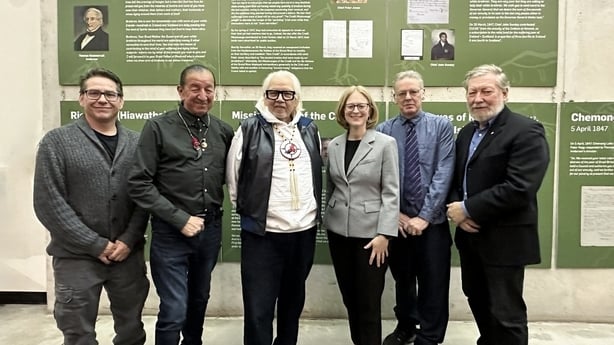
The Honouring Indigenous Aid Exhibit pays tribute to these donations and moved from Toronto to Ottawa in March for 'St Patrick's Month'.
"We were really curious if the Choctaw and the Cherokee had given specific amounts of money, was it possible that indigenous peoples north of the Canada/US border did the same?" Dr McGowan said.
'Astounded'
The professor of history and Celtic studies was amazed that letters marking the charitable donations had been within reach for all this time.
"It’s just that nobody has thought of using them or publicising them," he said.
Dr McGowan added: "We were quite astounded by what we found."
The First Nations requested that donations be deducted from their government annuities and added to the relief fund, according to Dr McGowan, with the Mississaugas of the Credit First Nation even making their contribution while being removed from their own homes.
The letters from chiefs and councils across the province followed a similar pattern and were "universally positive", Dr McGowan said.
"They say they were very sorry that the children of the Great Mother, who they consider their brothers and sisters in Ireland were suffering.
"Universally, they are distressed and empathetic. They felt that kind of pain in the past.
"In the letters, they also say they would give more but they themselves are poor."
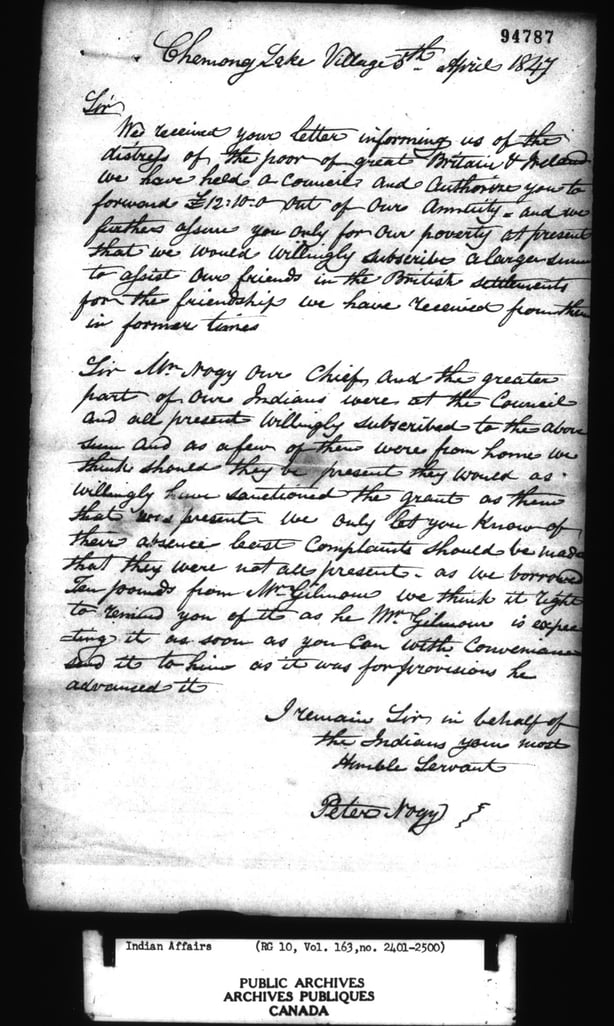
Dr McGowan highlighted that these First Nations were struggling to survive at the time.
"These are people who have virtually got nothing and are losing what they had," he said.
One of the most poignant of the letters was written by Chief Kahkewaquonaby (Sacred Feathers, also known as Peter Jones) on 22 March 1847 on behalf of the Mississaugas of the Credit River.
"It would have afforded us great pleasure to have given a larger amount," he wrote.
"But we regret to inform you that our people here are in a very destitute state arising from their not having raised any quantity of produce during the last summer, owing to the surprise concerning their removal, and the few potatoes they planted having also proved a failure."
'We understood what it was like to suffer'
An elder from the Saugeen Ojibway Nation, Dr Duke Redbird, told RTÉ News that he found it "amazing" that his people had donated generously at a time where they were struggling themselves.
"I was well aware of the Choctaw contributions, but I didn’t know about the contributions from my own community. I was quite excited to find out," he said.
Dr Redbird added: "This information had been suppressed by the Canadian government and by the Church.
"They didn’t want news to get out that indigenous people were sending money to Ireland.
"They discouraged any kind of charity or gift giving by indigenous people.
"It was absolutely terrible. We were in abject poverty."
The 86-year-old activist said he has spent his lifetime highlighting the atrocities that his people have faced.
"The settlers came, and we gave them all we had," he said.
"We taught them how to live on this continent. In return, they did horrible, horrible things to my people.
"Even under those conditions, we still found it in our hearts to send money to people who were suffering, because we understood what it was like to suffer."
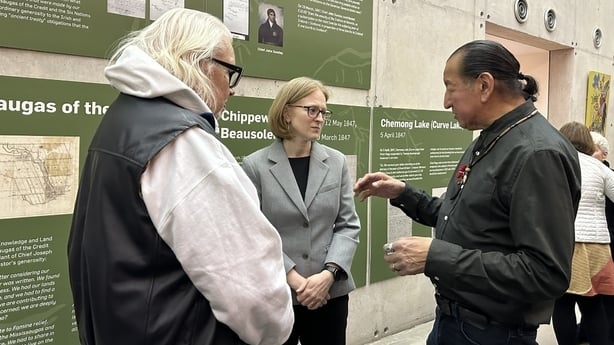
Dr Redbird has seen similarities between the running of residential schools and Magdalene laundries, with both institutions only closing their doors in the late 1990s.
"Rather than excommunicating troublemakers they sent them to the indigenous schools," he said.
"They sent them to any place where they could get away with abuse."
He has also studied Ireland's history to learn more about the connection.
"I learned about what happened on Bloody Sunday, those Irish had the same experiences as we had," he added.
However, the relationship between Irish people and First Nations in what is now Canada was not always positive.
Dr Redbird described the Irish settlers that first arrived on indigenous land as "treacherous".
"They were taking everything that they could," he said. "They were involved in the slave trade.
"The ones that came after the famine were much better."
US donations
In the United States, Dr Conor Donnan has studied donations sent from Native Americans to Ireland during the famine, donations that are now also believed to have been far more widespread.
The Washington DC-based academic is writing a book covering the connections between Irish people and Native Americans between the 1840s and 1940s.
"There were multiple donations from Native Americans during the famine, not just one," Dr Donnan said.
The connection between the strangers did not stop there with Éamon de Valera turning to his indigenous allies for support during his tour of the US to gain formal recognition of the Irish Republic.
In October 1919, the 'President of the Irish Republic' visited the Lac Court Oreille band of the Ojibwe in Wisconsin.
It was reported that the Ojibwe made the Irish leader an "honorary chieftain" of their nation and that Mr de Valera accepted the name 'Dressing Feather' after a famous Ojibwe leader.
"They [the Ojibwe] gave Dev a lot of support and talked about how it was a joint struggle," Dr Donnan said.
He added: "Dev gave a speech partially in English, partially in Irish.
"He said that he understood their struggle in a way that only an Irish person could."
The future Irish president was even gifted moccasins, bows, a belt, and a headdress, which he brought home to Ireland.
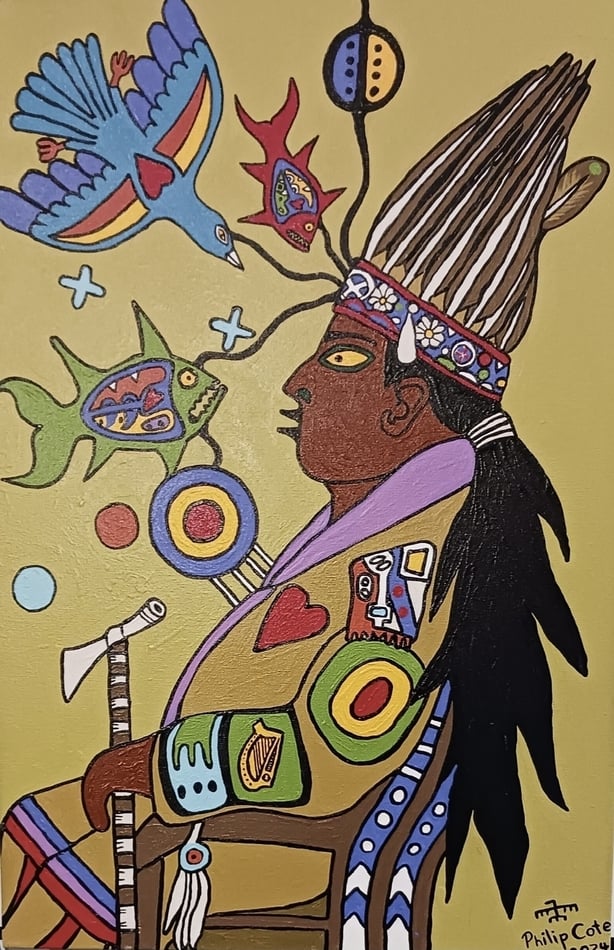
A century later, Irish people were eager to pay forward donations received during the Famine.
In 2020, the death toll from the Covid-19 pandemic was particularly acute in the Navajo Nation and the Hopi Nation which include parts of Arizona, Utah and New Mexico.
People living in Ireland donated at least $3 million to online fundraisers launched by the nations.
"Irish people remembered the famine donations," Dr Doonan said.
"The donations happened at a time when the Choctaw and Cherokee nations had been marched out of their homelands at gunpoint.
"They still took time during their own catastrophic situation to think how can we help those people."
Dr Donnan has studied how the unlikely alliance has continued right up until the present day.
"When the Troubles happened, the American Indian movement came to visit the Irish nationalist groups in Belfast," he said.
"They [Native Americans] played the mourning drums at Bobby Sand’s funeral."
Clear connection
Meanwhile, indigenous people in Canada, like Russell Wallace from Lil’wat Nation in British Columbia, see clearly their connection with Irish people.
The award-winning composer is keenly aware of the effects of colonisation, as his mother attended a residential school.
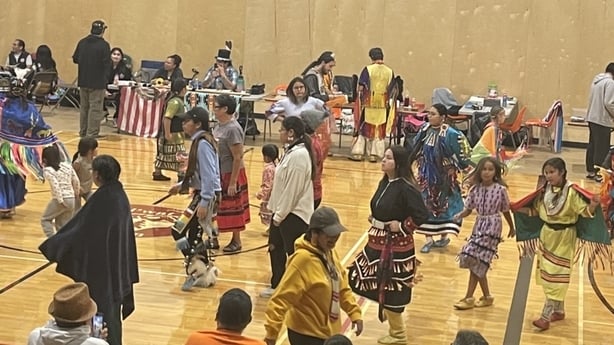
"They had a pretty standard way of doing that, in terms of abolishing language, culture," Mr Wallace said.
He added: "My mom went through residential school. She was beaten for speaking her language or singing the language. She was determined to keep it going."
Dr Lorna Wanosts'a7 Williams was also taken from her family in Lil’wat Nation and sent to residential school when she was just six years old.
The elder spent four months in hospital afterwards and lost her ability to speak.
"In a very short space of time, I lost all capacity for communication," she said. "I couldn't use any language."
This spurred her on to spend her life protecting her language and culture.
"The way that we speak is different to the English world," she added.
"The way that we organise our information and knowledge is different from the English world.
"They took away our languages and made us fight for our rights."
Ms Wanosts'a7 Williams said that even now people in her community are afraid to speak their own language.
"When people are different, they become less than," she said.







